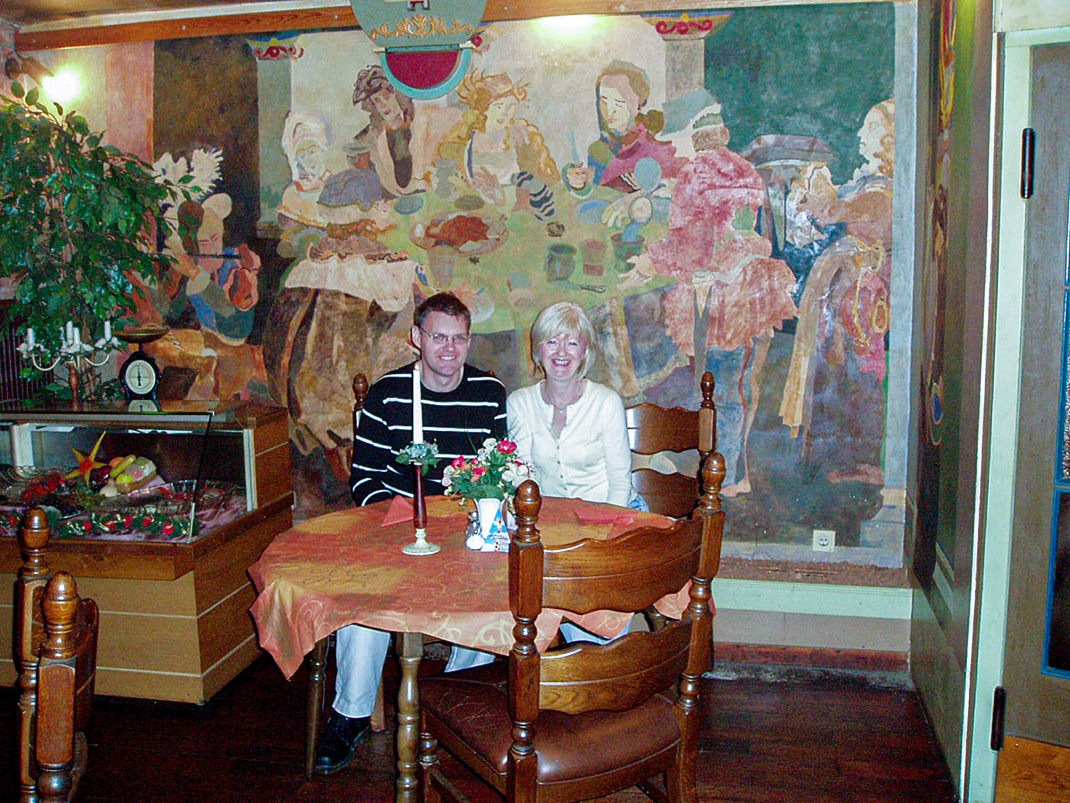Ratzeburg - 2007
Contents
In June 2007 we visited Ratzeburg in Germany, staying in the neighbouring village of Bäk.
We rented a Ferienwohnung. Our accommodation was delightfully located with splended views from the living room window.
Our hosts, Mr & Mrs Heuer were very nice and, although they spoke very good English themselves, they appreciated that I wished to practice my German and therefore gave me every opportunity to do so.
The centre of Ratzeburg was only a few minutes away by car and just around the corner was an ice-cream café which Pat and I visited a number of times!!
The living room was nicely furnished and lead to a covered patio area and garden.
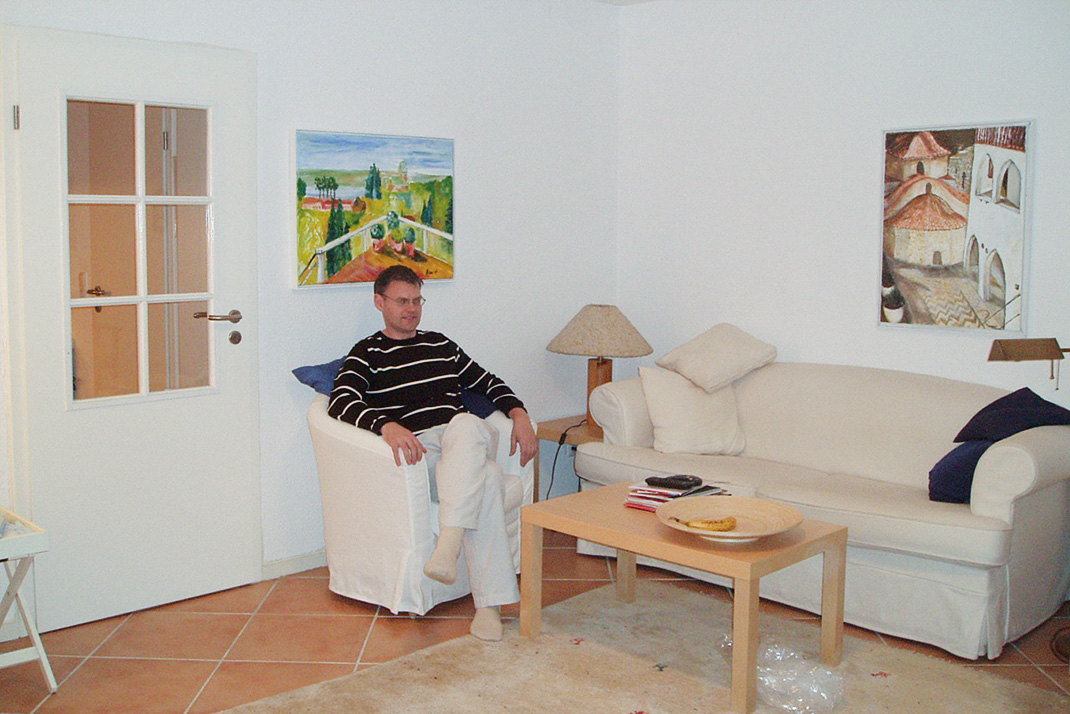
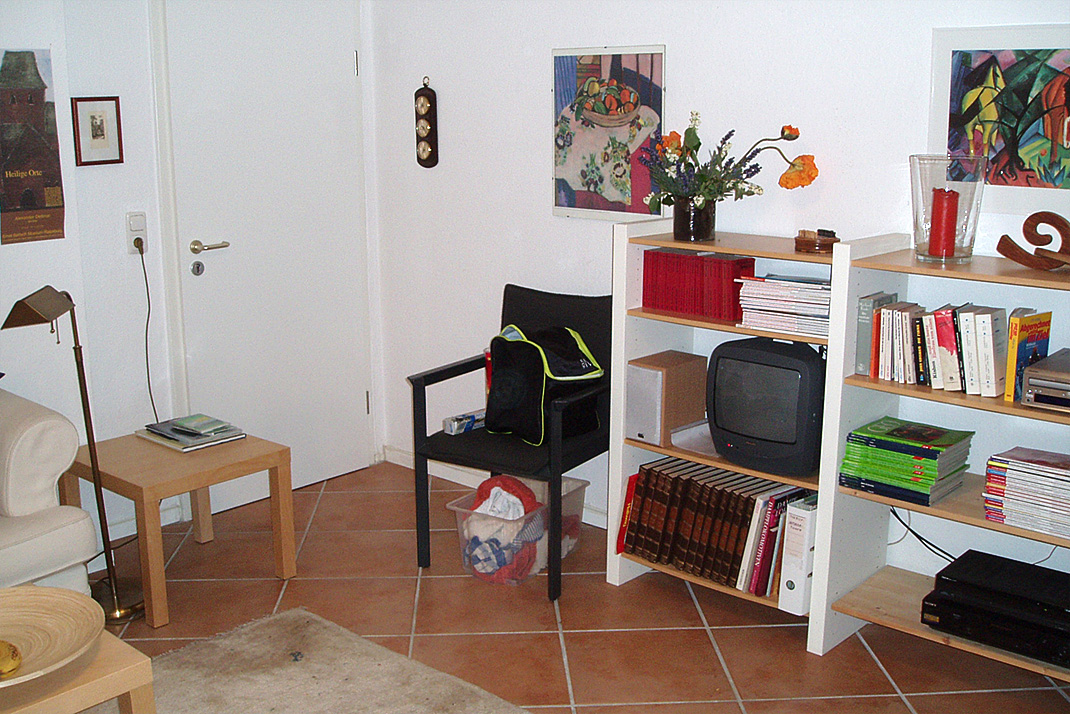
The kitchen was perhaps a little smaller than in other accommodation we have had in Germany but it nevertheless had all the necessary appliances.
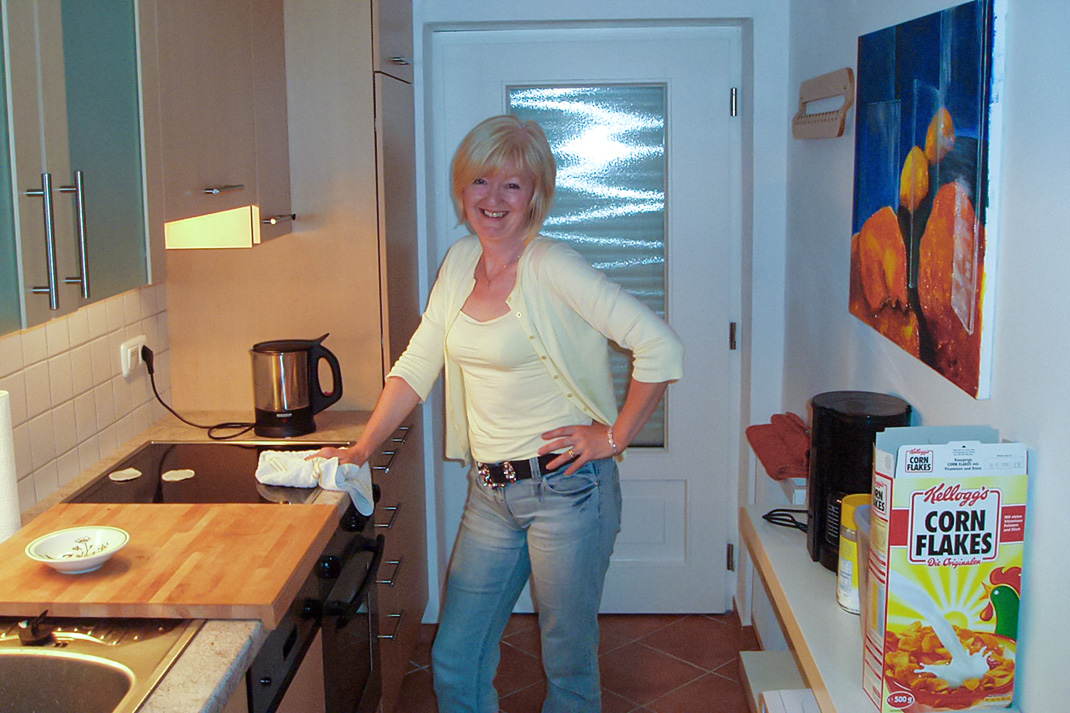
The Bedroom was nicely sized and, as with all the other rooms, very clean.
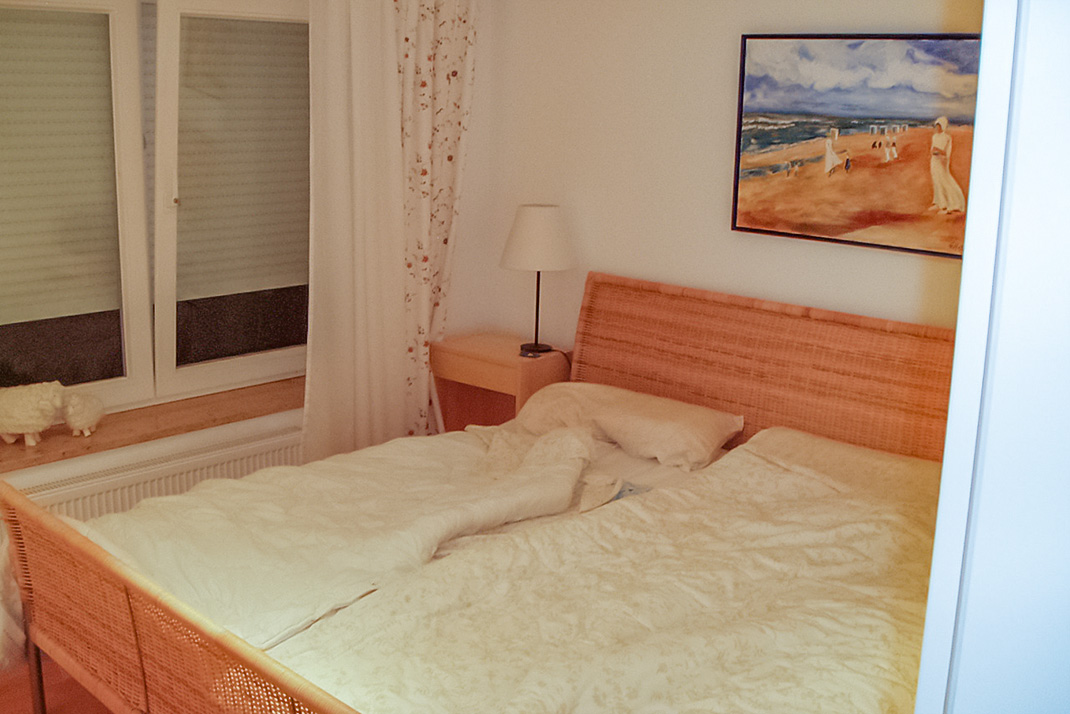
One of the first places we visited on the holiday was the town of Schwerin which lies a little under an hour's drive to the east of Ratzeburg.
The main attraction in Schwerin is the Schweriner Schloss (Schwerin Castle) which for centuries was the home of the dukes and grand dukes of Mecklenburg and later Mecklenburg-Schwerin. It currently serves as the seat of the state parliament. (The German Democratic Republic, opposed to nobility, used it as a college for kindergarten teachers from 1952-1981.)
The small impious ghost Petermännchen reportedly roams the halls of Schwerin Castle. This little spirit is no more than a few feet high, and is often depicted in clothes from the 1600s, something resembling a cavalier. His existence may be in doubt, but he remains a popular legend.
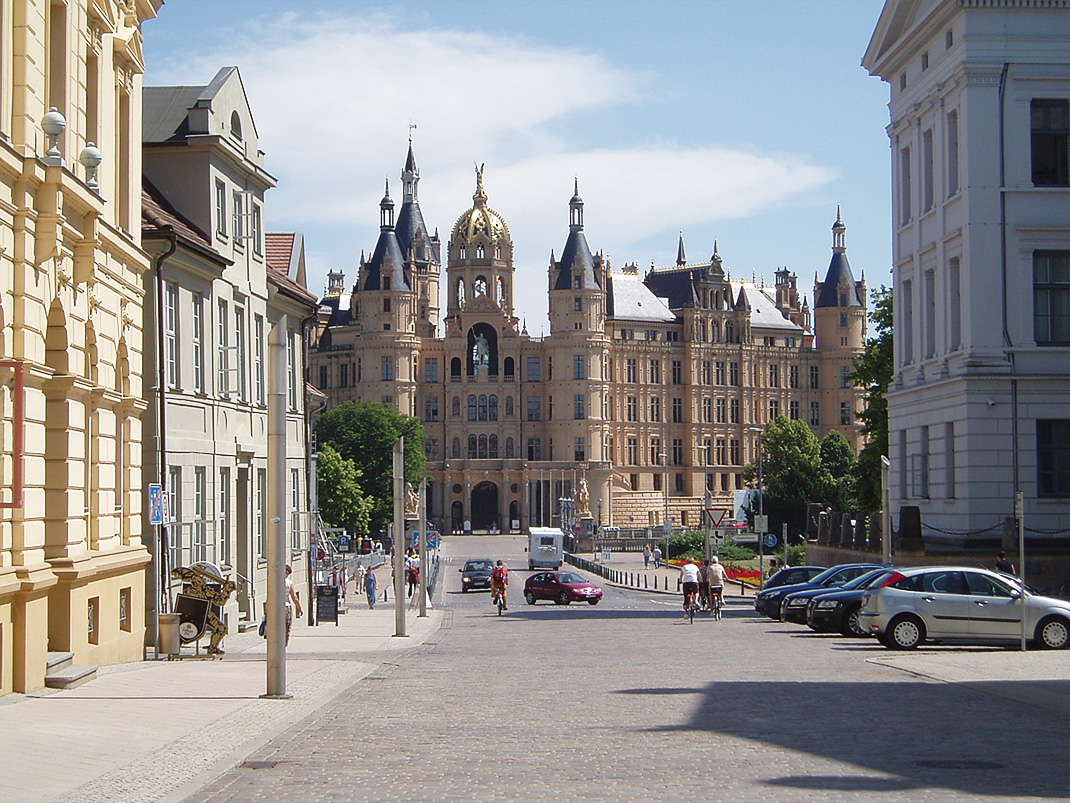
The castle is located on an island in the lake of the same name (Schweriner See).

It was once the site of the island castle "Zuarin" which was burned down in 1160 by the prince of the Abodrites, Niclot, in the face of a siege by Henry the Lion. The re-constructed castle became the ducal seat of Schwerin and later of the Grand Duchy of Mecklenburg-Schwerin. During the 16th and 17th centuries the castle was converted into a palace. In the middle of the 19th century the castle underwent fundamental conversion work according to the plans of Demmler, Willebrand and Stüler using Gottfried Semper's ideas and modelled on the French Renaissance chateau Chambord.
Mölln is a town in Schleswig-Holstein, Germany. It is surrounded by several small lakes. The Elbe-Lübeck Canal flows through the town.
The town was founded in the 12th century. It rapidly became an important town, due to the Old Salt Route and the Stecknitz Canal, which was a precursor of the today's Elbe-Lübeck Canal. Although situated in the midst of the medieval duchy of Lauenburg, the town was mortgaged to the Hanseatic town of Lübeck, which ruled Mölln from 1359 to 1683.
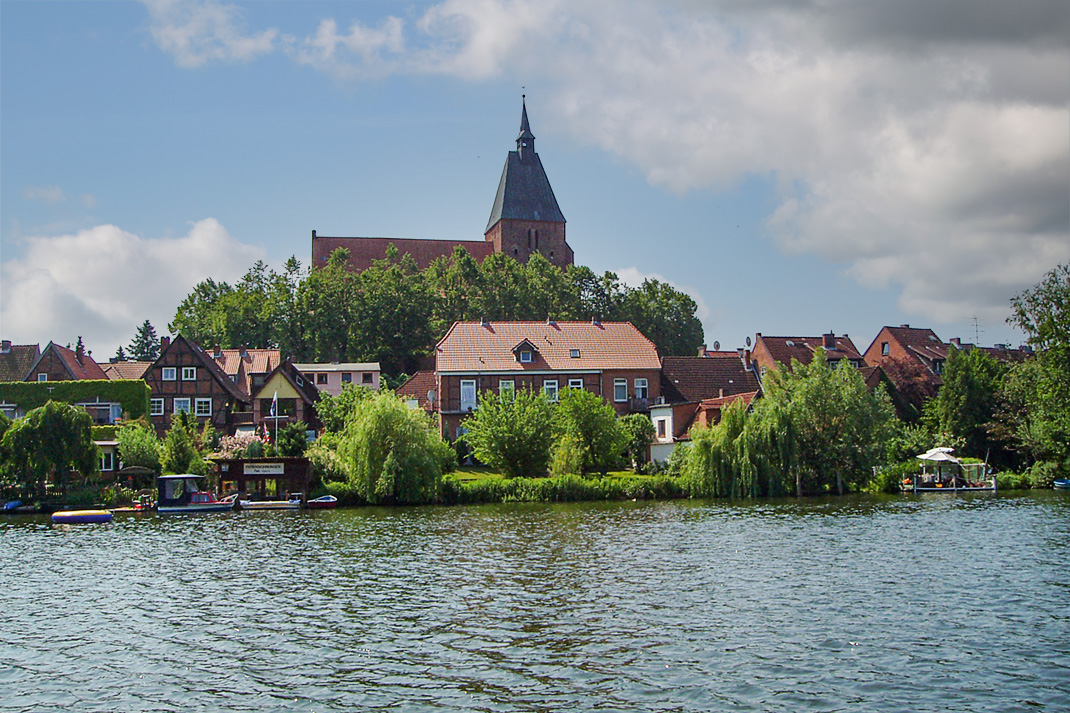
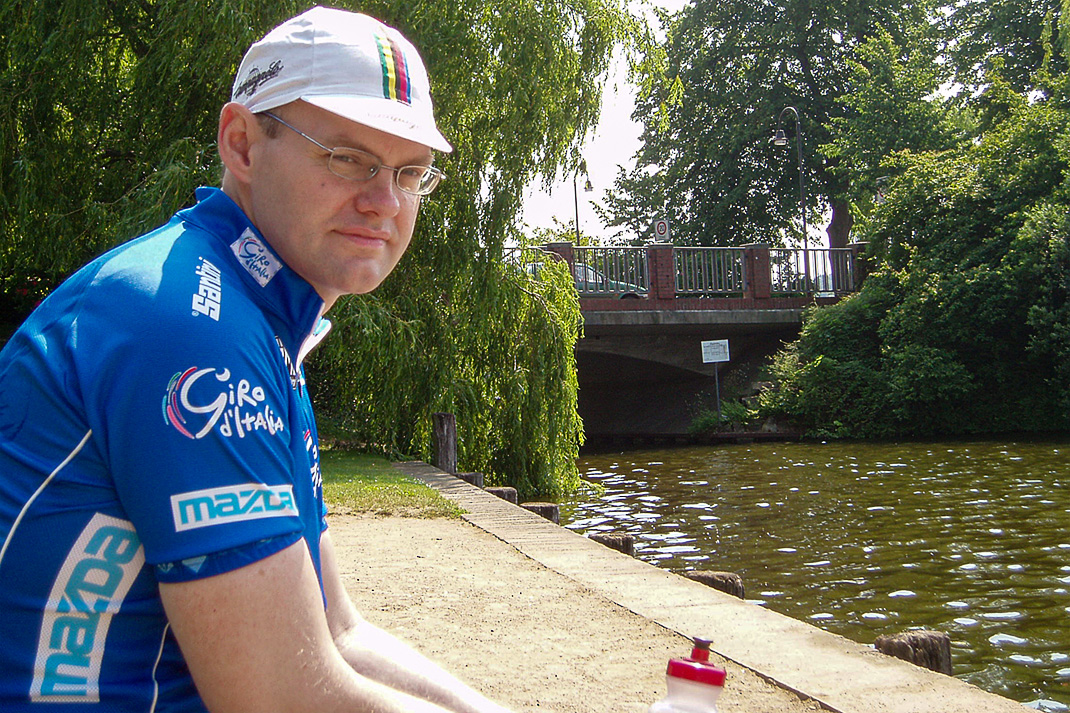
Mölln calls itself the Eulenspiegel town, due to Till Eulenspiegel, a legendary clown (see statue on the right). Eulenspiegel is said to have lived in Braunschweig (Brunswick), but his last year of life he allegedly resided in Mölln. He died from the plague in 1350. Although his existence is not proven, there are several monuments to him in Mölln.
According to the tradition, he was born in Kneitlingen near Brunswick in 1300. He travelled through the Holy Roman Empire, especially Northern Germany, but also the Low Countries, Bohemia, and Italy. While he is likely not a historic person, Eulenspiegel is said to have died in Mölln in 1350, and a gravestone attributed to him is placed there.
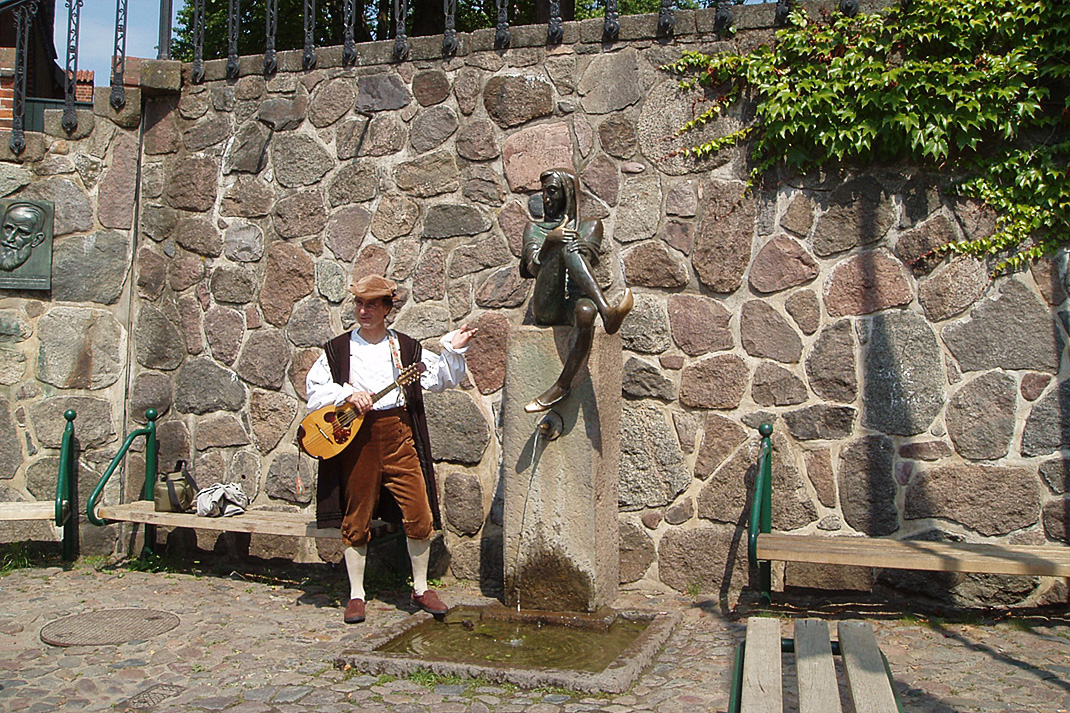
In the legend, he is presented as a trickster or fool who played practical jokes on his contemporaries. Although craftsmen are featured as the main victims of his pranks, neither the nobility nor the pope are exempt from being fooled by him.
The best known version of the Eulenspiegel story is An entertaining book about Till Eulenspiegel from the land of Brunswick, published anonymously around 1510 in Early New High German. The authorship is attributed to Hermann Bote.
The literal translation of the High German name gives "owl mirror". However, the original Low German is believed to be ul'n Spegel, meaning "wipe the arse"!!
Another of our cycle rides took us to the picturesque seaside resort of Travemünde which lies on the Baltic coast, a few miles north of Lübeck.
Here you can see a typical beach scene. The boxes are the equivalent of English deckchairs, but obviously much more substantial and much better at protecting from the sea breezes.
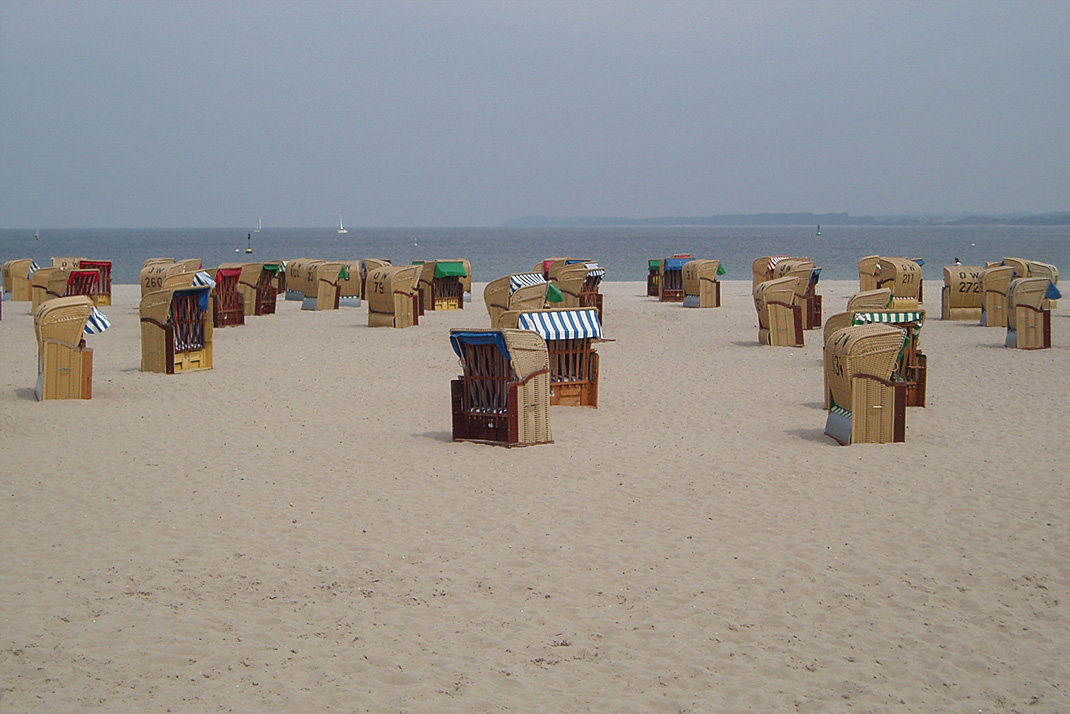
Travemünde arose out of a stronghold placed here by Henry the Lion, Duke of Saxony, in the 12th century to guard the mouth of the Trave, and the Danes subsequently strengthened it. It became a town in 1317 and in 1329 passed into the possession of the free city of Lübeck, to which it has since belonged. Its fortifications were demolished in 1807.
It is Germany's largest ferry port on the Baltic Sea with destinations to Sweden, Finland and Estonia.
Our cycle ride from Bäk to Travemünde was interesting because after we had gone through Lübeck we had to catch a shuttle bus which took Pat and I and our bicycles under a tunnel and out the other side where we were able to continue our journey by bicycle.
Lübeck is the second largest city in Schleswig Holstein with a population of around 200,000.
It was for several centuries the "capital" of the Hanseatic League (an alliance of trading guilds that established and maintained a trade monopoly over the Baltic Sea, to a certain extent the North Sea, and most of Northern Europe for a time in the Late Middle Ages and the early modern period, between the 13th and 17th centuries) and because of its Brick Gothic architectural heritage is on UNESCO's list of World Heritage Sites.
Lübeck is situated at the Trave river with the largest German port at the Baltic Sea. The old part of the town is an island enclosed by the Trave river. The Elbe-Lübeck Canal connects the Trave with the Elbe river.
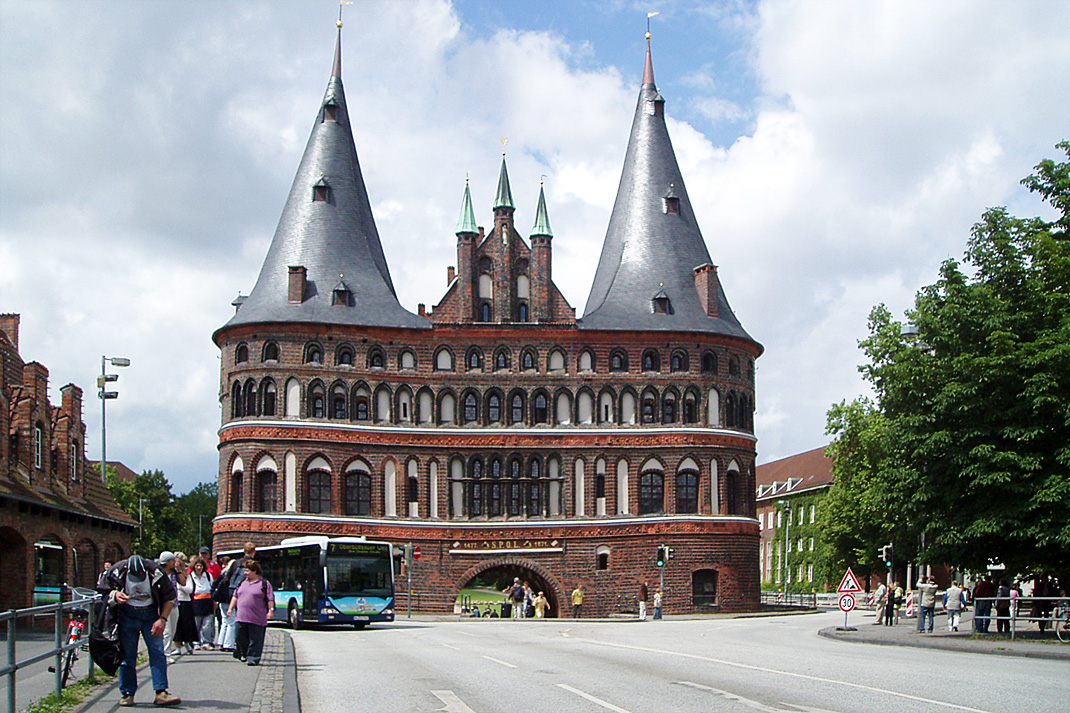
In the photograph you can see the Holstentor ("Holstein Gate") which is a late Brick Gothic city gate, the only still existing one beside the Burgtor and part of the medieval fortifications of Lübeck. It consists of two round towers at the north and the south side with an arched entranceway between them.
The main gate was erected by the city master builder Hinrich Helmsted between 1464 and 1478. A front gate of the Holstentor, supposed to improve the defence of the city's west side, was built in 1585. It was later demolished. Because the Holstentor was sinking into the ground, it was in danger of collapse. In 1863 the lowest arrow slits were found 50 cm under the ground and the tendency of the whole gate was risky. Until 1871 one tried to save it, but it still caved in. In 1933/34 the security precautions were successful, but the architecture of the gate was altered thereby. In 2005/2006 the gate again was renovated.
The Holstentor appears on a special edition of the German 2 Euro coin and former 50 DM banknote and also appeared as a landmark in the PC game "Simcity 3000".
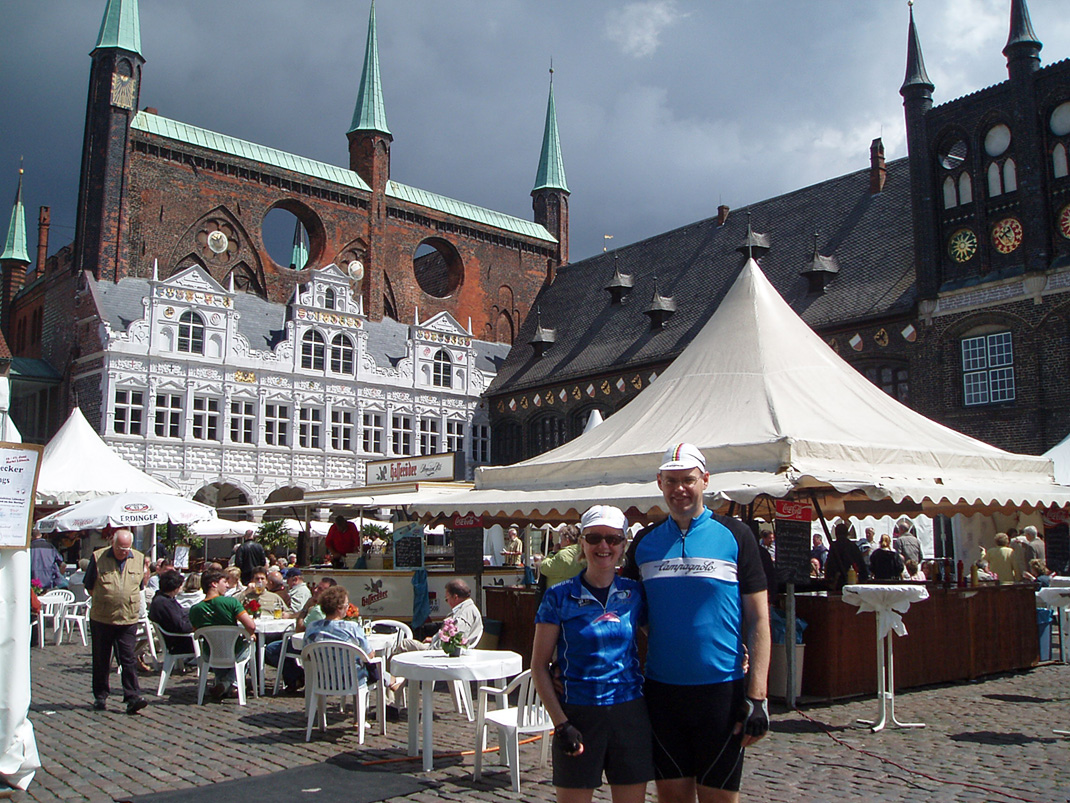
Ludwigslust is a town in Mecklenburg-Vorpommern, Germany, 40 km south of Schwerin.
In 1724 Prince Ludwig, the son of Duke of Mecklenburg-Schwerin, decided to build a hunting lodge near a small hamlet called Klenow. Later, when he took over the reign, he stayed most time at this residence and called it Ludwigslust ("Ludwig's joy"). In 1765 Ludwigslust became the capital of the duchy instead of Schwerin. The town was enlarged by a residential palace (the Schloss) which you can see in the photograph. This situation lasted until 1837, when Grand Duke Paul Friedrich returned the capital status to Schwerin.
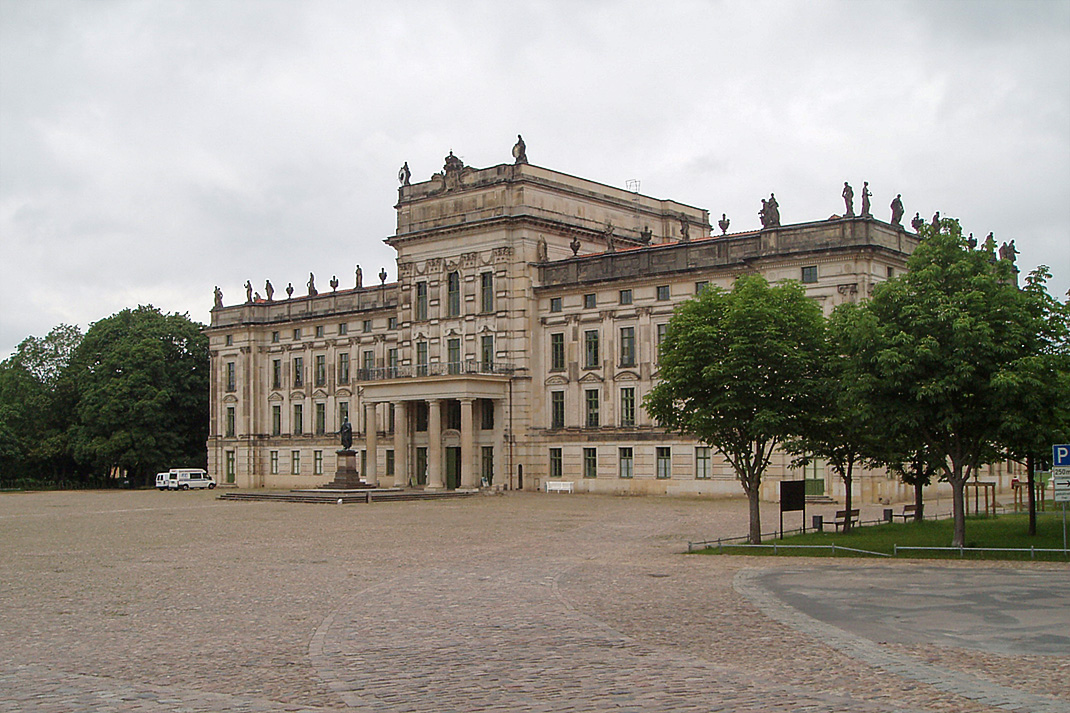
The Schloss, a Baroque residential palace built in 1772-1776, after plans by Johann Joachim Busch. It is known as the "Little Versailles in Mecklenburg". The palace is located in the middle of the Schlosspark, a vast park (120 ha.), laid in English style, with canals, fountains and artificial cascades.
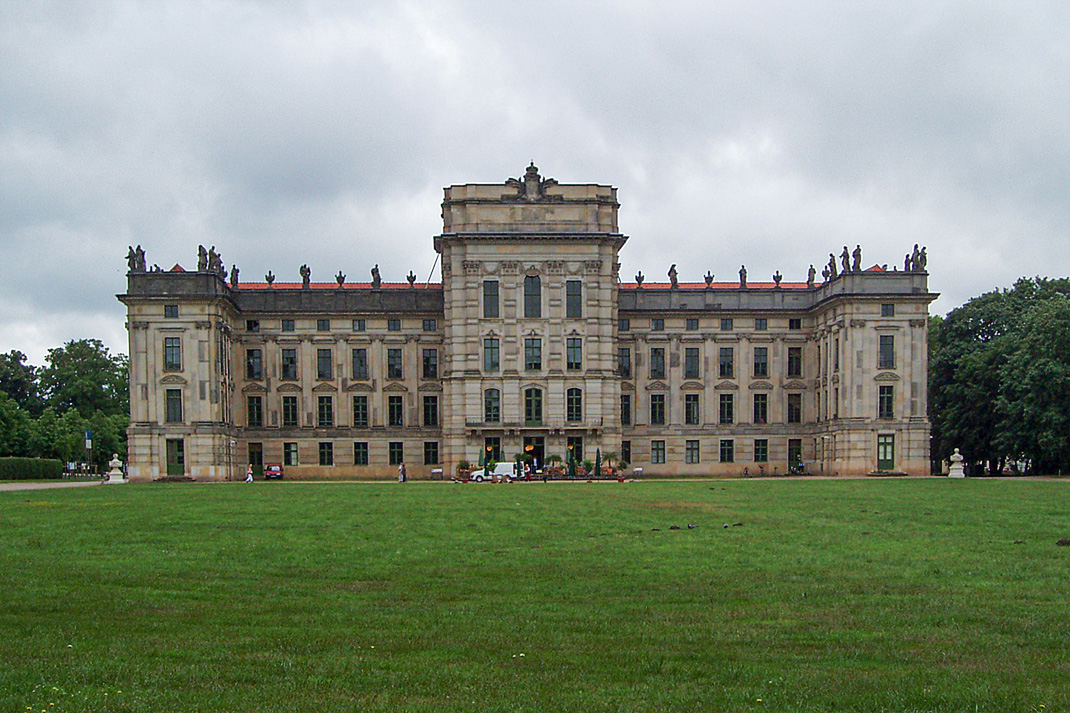
Wismar is a small port and Hanseatic League town on the Baltic Sea, in the state of Mecklenburg-Vorpommern, about 45 km due east of Lübeck, and 30 km due north of Schwerin. Its natural harbour, located in the Bay of Wismar is well-protected by a promontory.
Representative of Hanseatic League city brick construction as well as the German brick churches, the city has been included in the UNESCO list of World Heritage Sites since 2002.
The town was also the setting of the 1922 vampire movie Nosferatu.
The centre of the old town is the huge Market Place, the largest in Germany (10,000 square metres), surrounded by elegant buildings with styles ranging from 14th-century North German Gothic to 19th-century Romanesque revival. The square's focal point is the Wasserkunst, an elaborate wrought-iron fountain imported from Holland in 1602 and which you can see in the photograph.
Whilst in Wismar, on the recommendation of our host, Mr Heuer, we visited the elegant cruciform church of St George (St Georgen-Kirche) which dates from the first half of the 13th century. It was destroyed in World War II but is currently being rebuilt.

On one of our bike rides we passed through the lovely seaside resort of Boltenhagen. We were so impressed that we decided to visit the town again, this time by car. Whilst there I treated myself to a Majetsfilet (small herrings) roll.
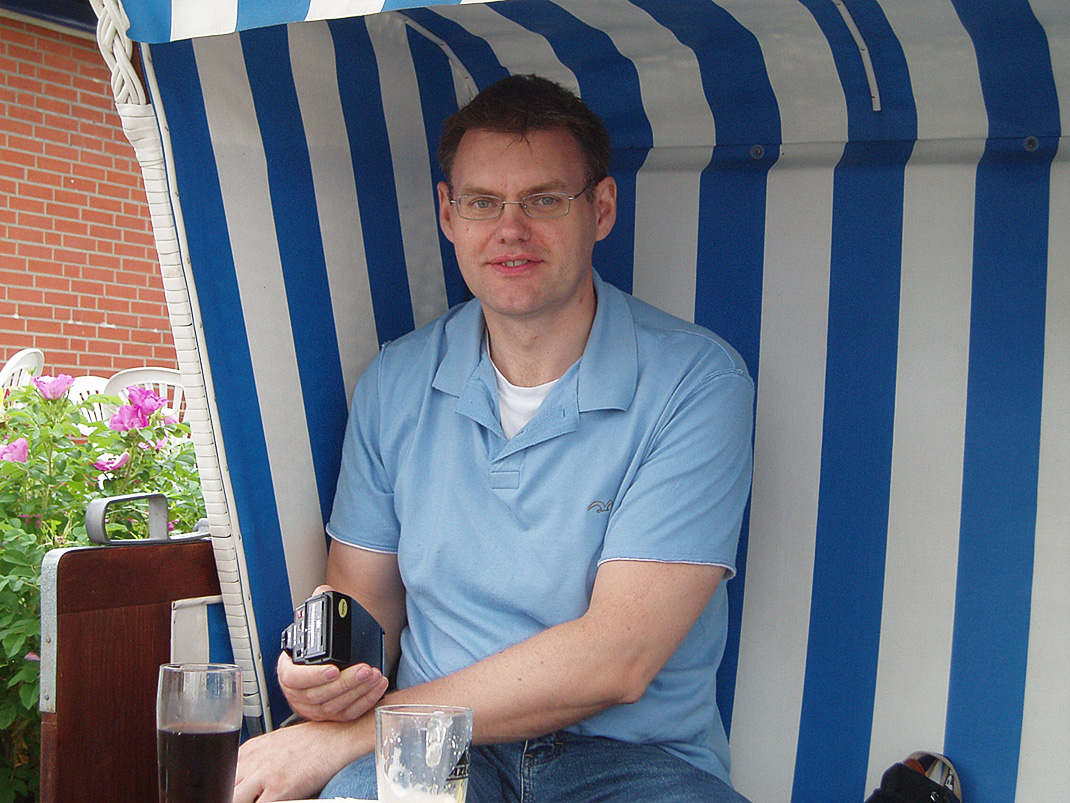
Whilst we were on holiday, we watched a performance of "The Hunchback of Notre Dame" which was played out in an authentic setting.
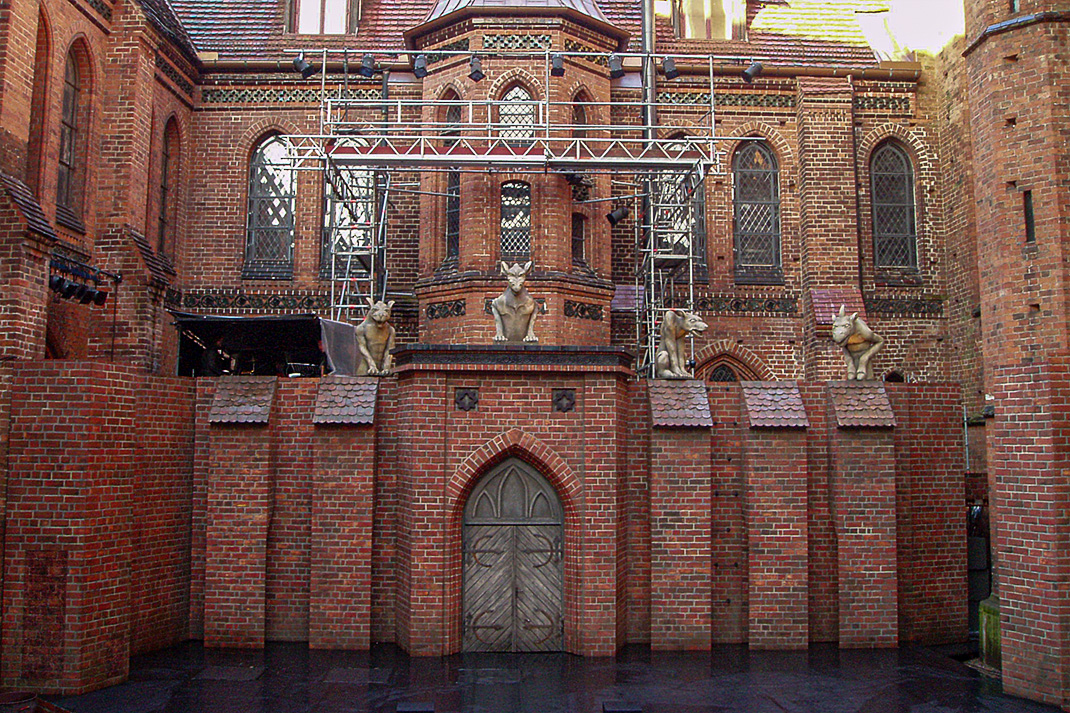
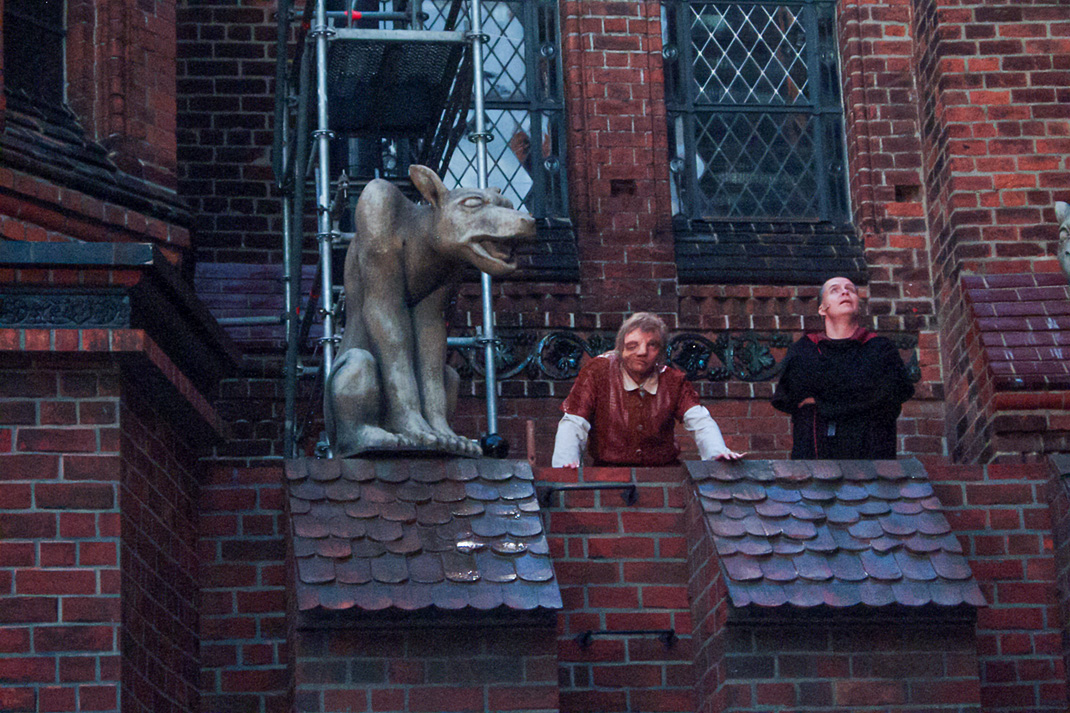

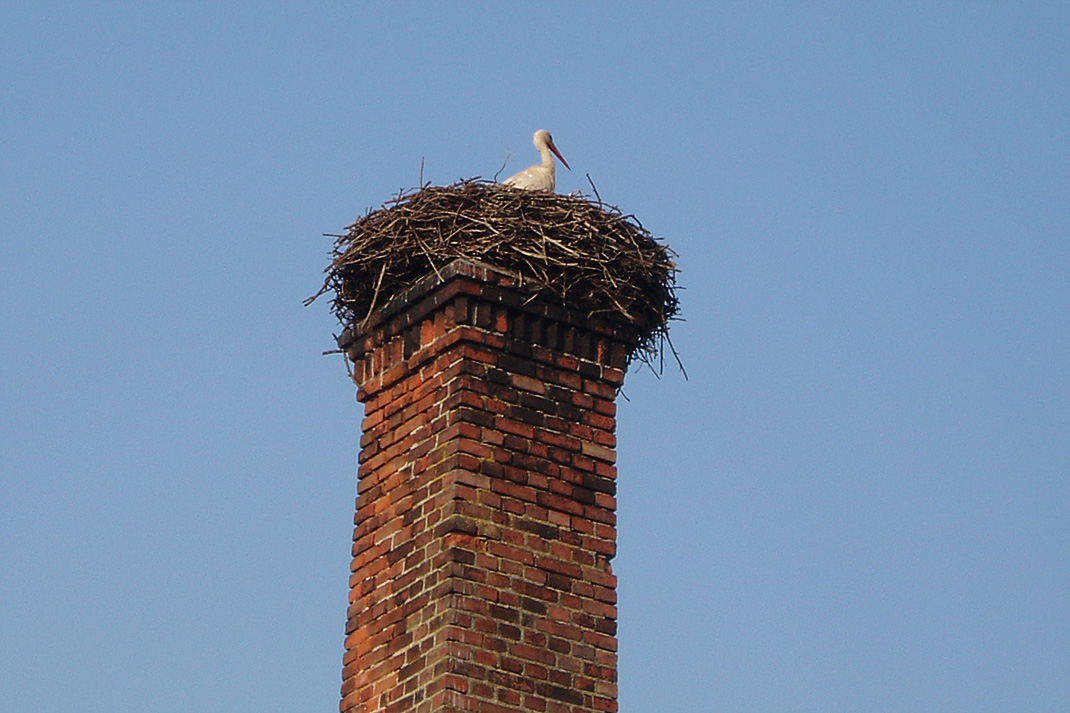
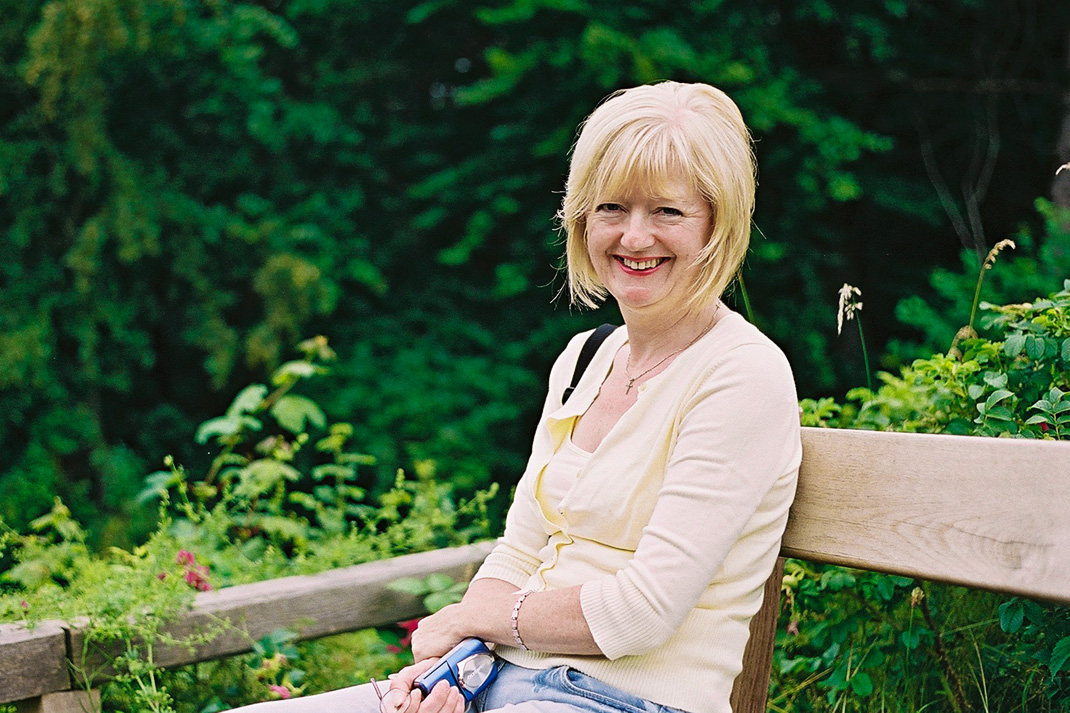
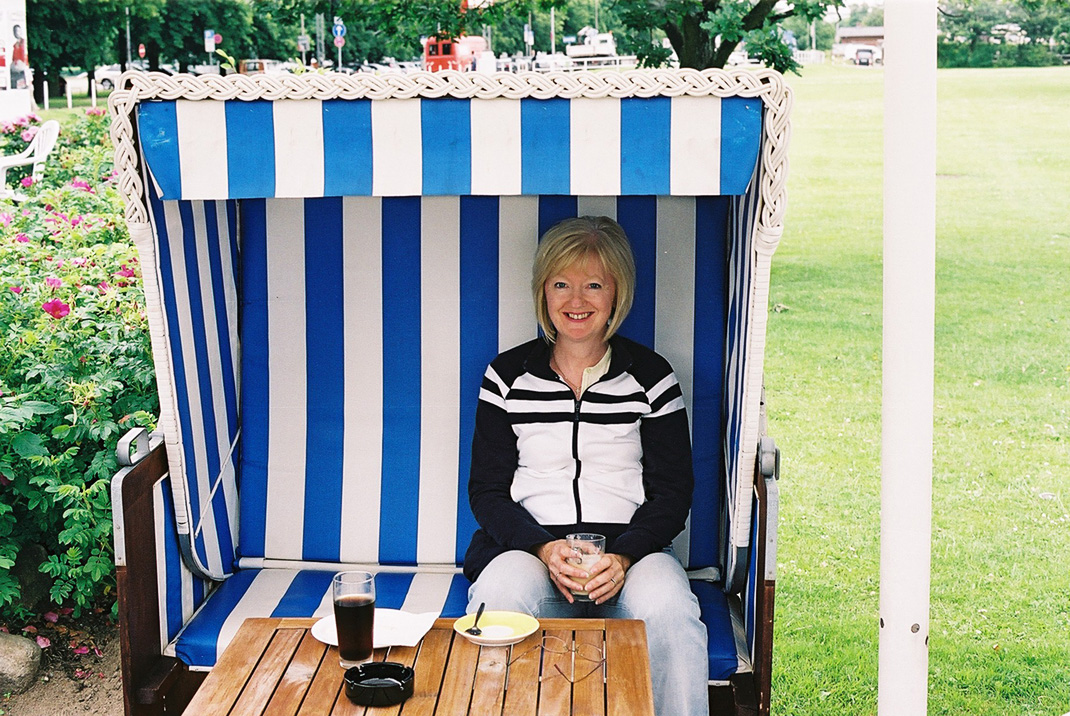
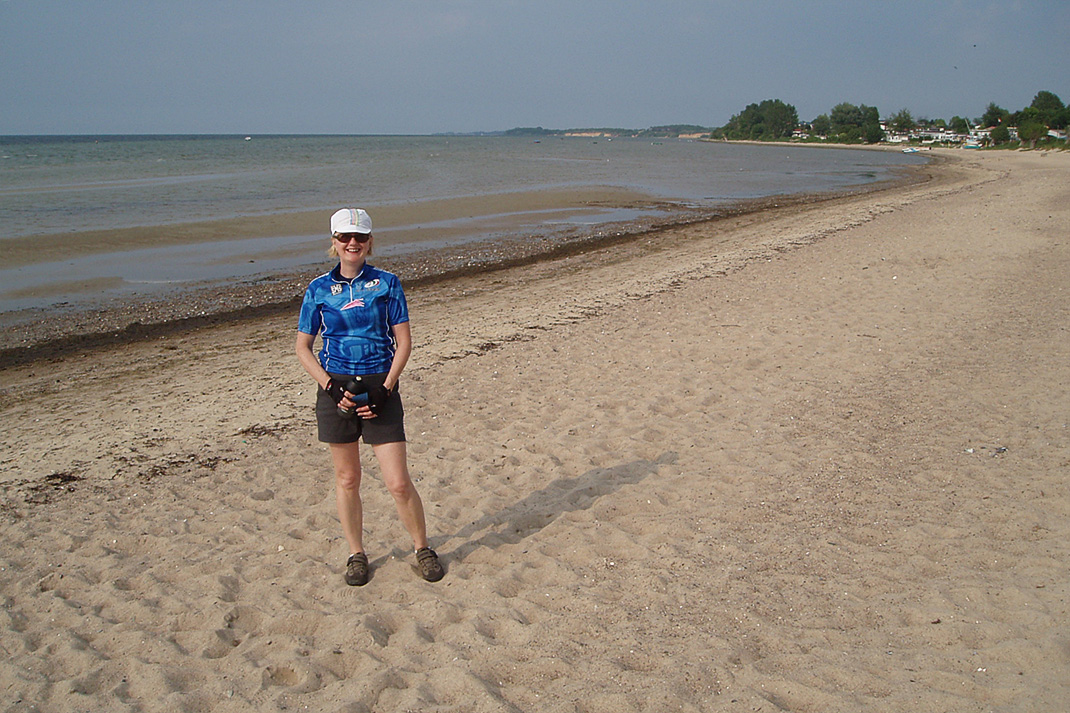
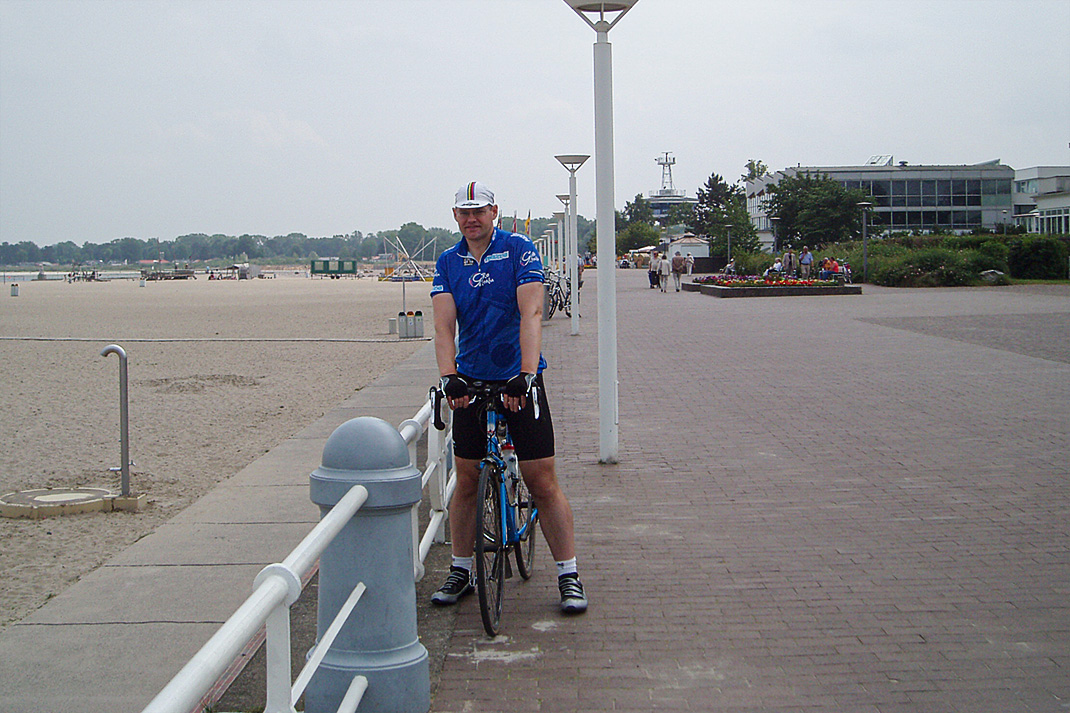
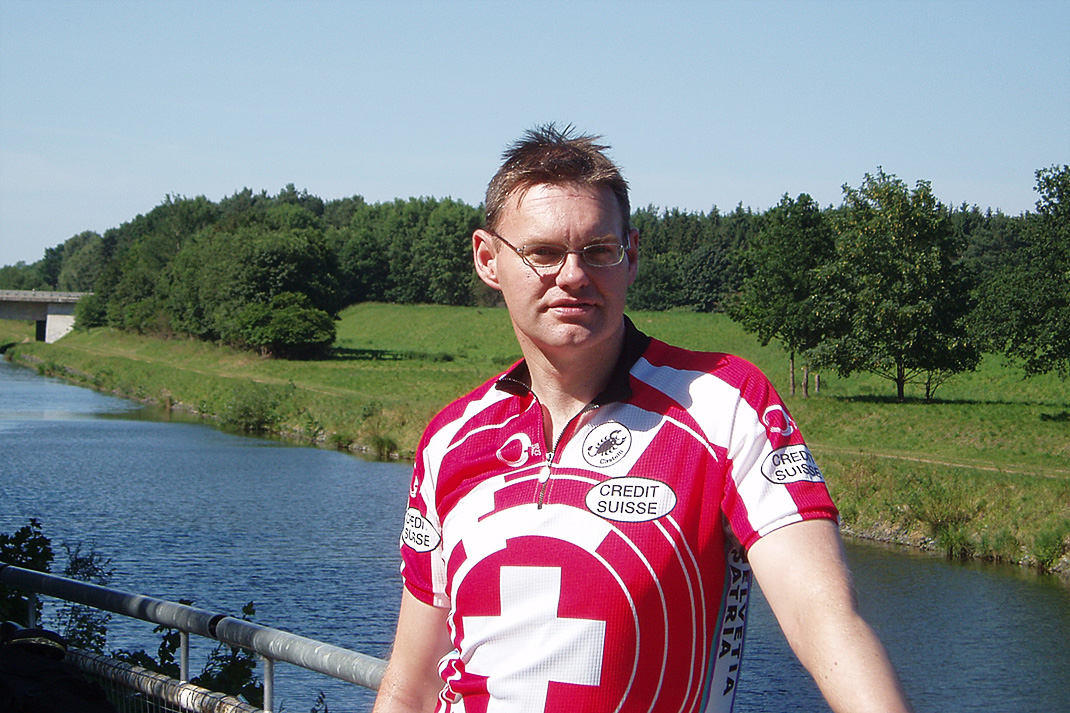
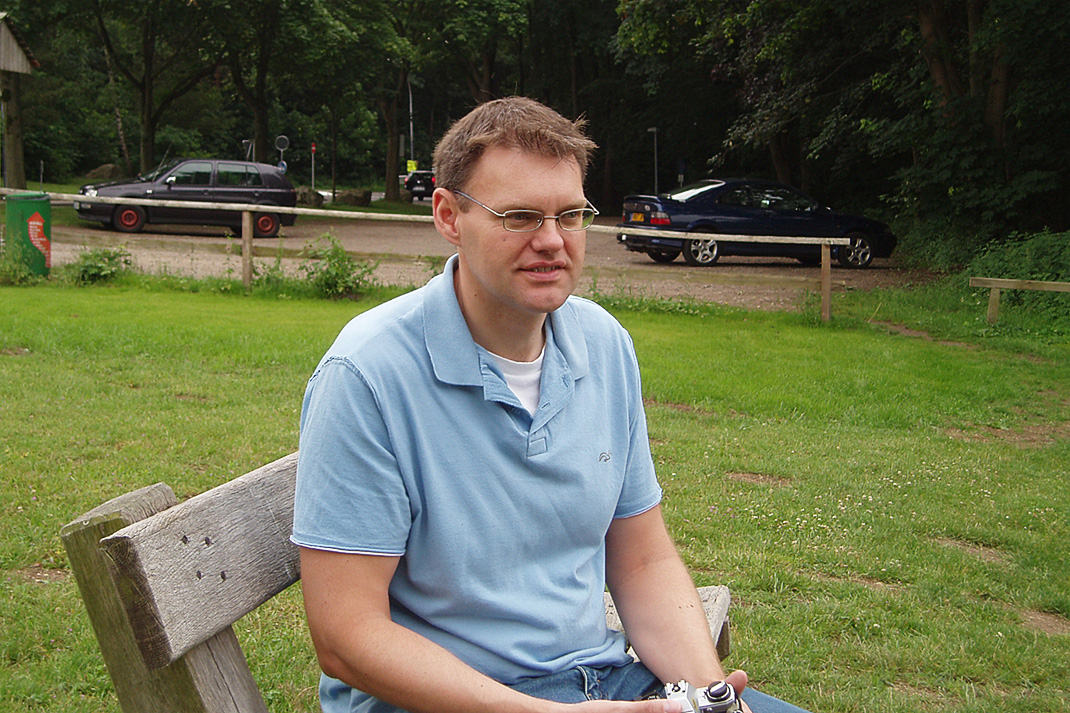
And, finally ... Ratzeburg itself ...
It is a town in Schleswig-Holstein, Germany and is pleasantly situated in the middle of four lakes which leave narrow access paths to the town. It is the capital of the Kreis (district) of Lauenburg and has a population of around 12,000.
The town was founded in the 11th century as Racisburg. The name is traditionally derived from the local Wendish ruler, Prince Ratibor of the Polabians, who was nicknamed Ratse. In the year 1044 Christian missionaries under the leadership of the monk Ansverus came into the region and built a monastery. It was destroyed in a pagan rebellion in 1066; the monks were stoned to death. Today monuments to the missionaries in two of the town's churches commemorate these events. Ansverus was canonised in the 12th century and his relics were entombed in the Ratzeburg cathedral.
Henry the Lion became the ruler of the town in 1143 and established a bishopric in 1154. Later it became a Prince Bishopric, whose ruler was sovereign and as such had a vote at the Imperial Diet. The Bishopric of Ratzeburg was the last Catholic state in north Germany. After the 1550 death of its ruler Prince-Bishop Georg von Blumenthal, who feuded with Thomas Aderpul, the bishopric converted to Lutheranism in 1554.
The town of Ratzeburg itself was not within the territory of the Bishopric of Ratzeburg, becoming instead part of the Duchy of Saxe-Lauenburg after the downfall of Henry the Lion. The town was almost completely destroyed in 1693, when Christian V of Denmark shot Ratzeburg to ashes. After this event it was rebuilt in Baroque style.
Ratzeburg was, briefly, part of the First French Empire during the Napoleonic Wars and was awarded to Denmark in the Congress of Vienna. After being annexed in the Second Schleswig War (1864), the town became part of the Kingdom of Prussia's Province of Schleswig-Holstein. The cathedral quarter finally became part of the town of Ratzeburg with the 1937 Groß-Hamburg-Gesetz.
From 1945 to 1989 the Iron Curtain ran just east of the town, putting it on the border with the German Democratic Republic.
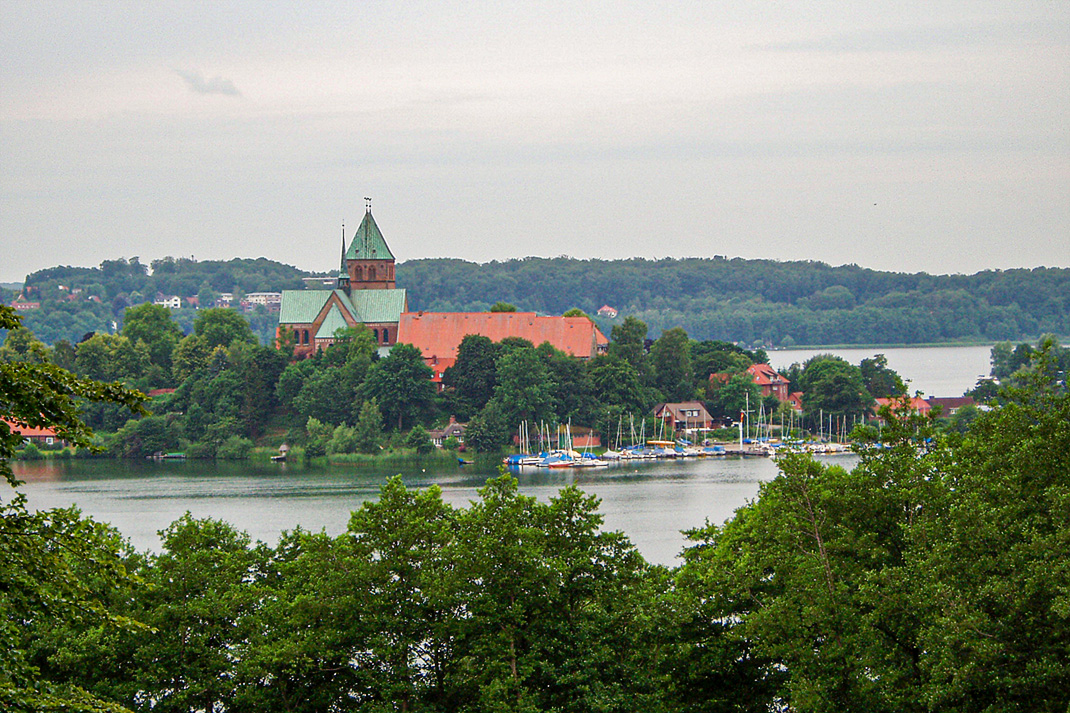
We spent the last evening of our holiday by having a meal at the Askanier Keller in Ratzeburg.
The building was built in the 16th Century and regular visitors have included Otto von Bismark.
